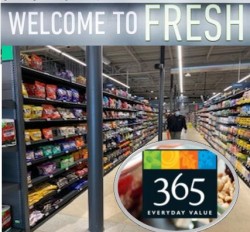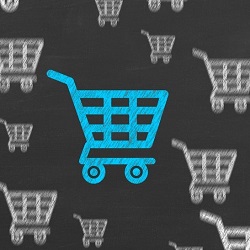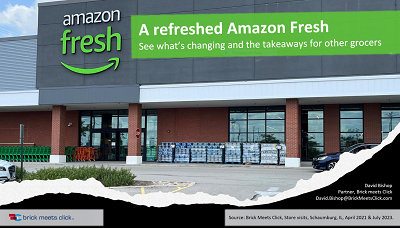Amazon Fresh's private label advantage is different and here's why
Complete the form below to instantly download this month's dashboard.

When Amazon Fresh stores first opened, they seemed like conventional supermarkets. A closer look at what they are putting on their shelves, however, shows that these stores operate differently when it comes to building their assortment of private label products,especially in how they do two things: 1) source the product, and 2) deliberately add certain items to each specific store’s assortment.
Both practices raise Fresh store performance in ways that conventional grocers currently cannot, so these are practices other grocers will likely try to duplicate in the future.
As part of our ongoing analysis of Amazon Fresh, we’ve been taking a “micro look” at Fresh’s assortment, and here’s what we learned.
Sourcing Private Label
Amazon Fresh is mainly building its private label assortment by drawing on products that have already been developed and sold by its sister chain, Whole Foods. About 2,400 different private label products are offered in the Whole Foods locations nearest the locations of Amazon Fresh stores.
- Almost 1,000 of these items are already offered in Fresh stores.
- This leaves a pool of slightly more than 1,400that are still candidates to be offered in one or more Fresh stores.
Amazon Fresh benefits from this sourcing method in two ways. First – and most important – it doesn’t have to spend time and money developing a lot of its own private label. Second, since these products are currently for sale in the nearby trade areas, they can be offered with reduced risk of the products not selling.
Having access to many private label products in reserve is an advantage we see being enjoyed only by the largest hard discounters, Aldi and Lidl, who work on a broad international scale. It seems likely that other large grocery retailers will look for ways to capture similar cost advantages.
Adding certain Private Label to increase the appeal of each store
Amazon Fresh does offer broader lines of own label products under Cursive for wine and Aplenty for snacks, but when it comes to “transplanting” Whole Foods private label products to each Amazon store, they are very selective.
The team at Fresh seems to be applying its analytical capabilities to “test and learn” which of the available private label products resonate strongly with the customers of each store. When they find these items, they add them to that store’s assortment.
Of the approximately 970 Whole Foods private label products carried across the entire Fresh banner, 75 are offered in all the Fresh stores, and 76 of the items are offered in only one Fresh store.
In addition, some stores offer significantly more WF private label products than others.
- Fullerton, CA carries the largest number, 617items.
- Chevy Chase, MD carries the smallest number, 370items.
Brick Meets Click POV
While it’s impossible to know for certain why and how Amazon is doing this selective placement, the evidence suggests that it is working on understanding the power of product attributes so it can curate store-specific assortments that deliver a strong appeal to the shoppers of that store. This would allow it to move beyond brand as the basic building block for assortment.
As Amazon Fresh does this, it will develop more efficient assortments, i.e., ones that can meet the needs of each store’s customers with fewer SKUs. Moving forward, we anticipate that this will be another way Amazon leverages its market power when negotiating with brands.
Given Amazon’s apparent focus on product attributes, it makes sense for brands to go deeper in understanding the impact of their own product attributes and how they could be used to generate greater sales and build competitive advantage.












